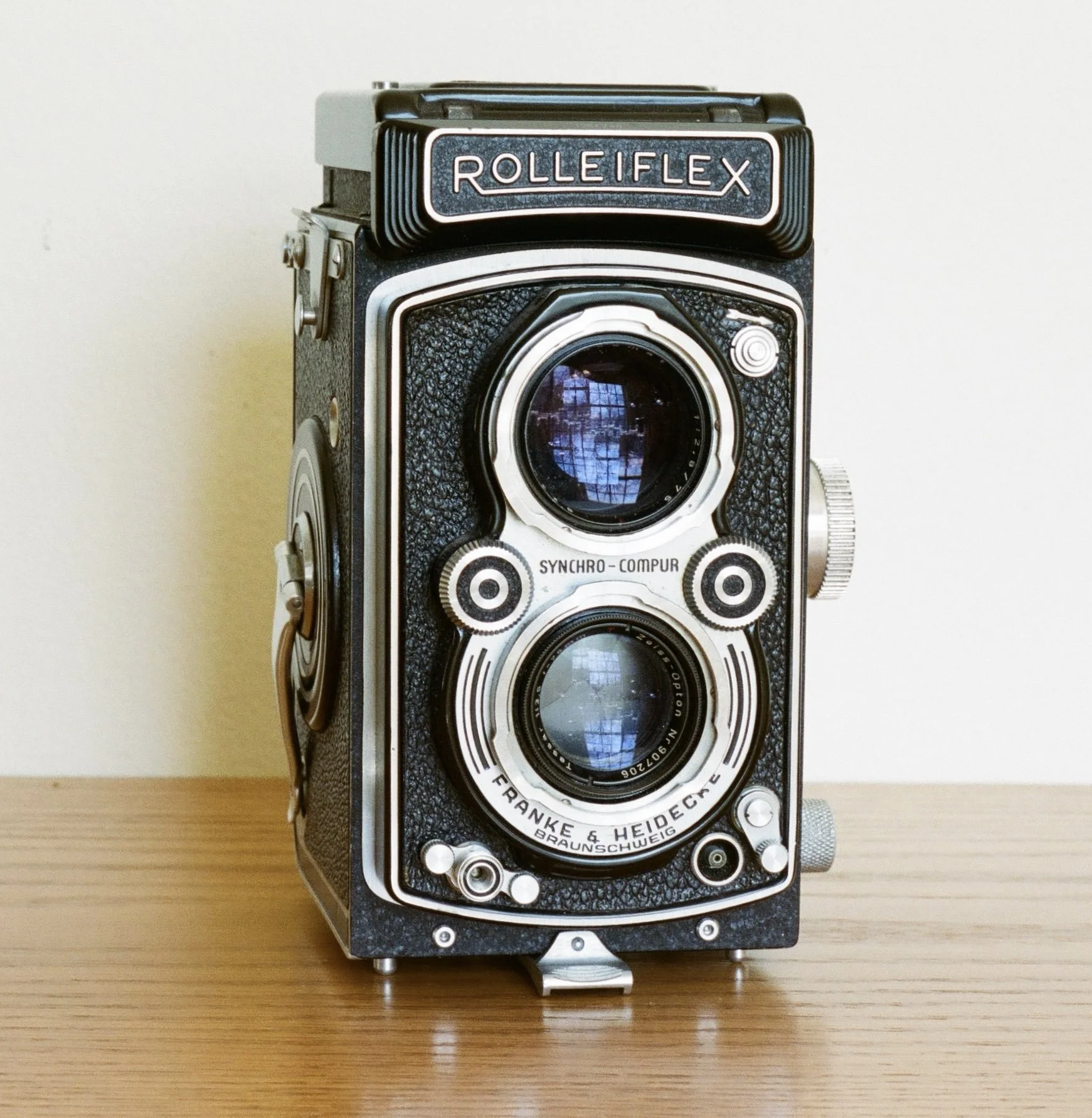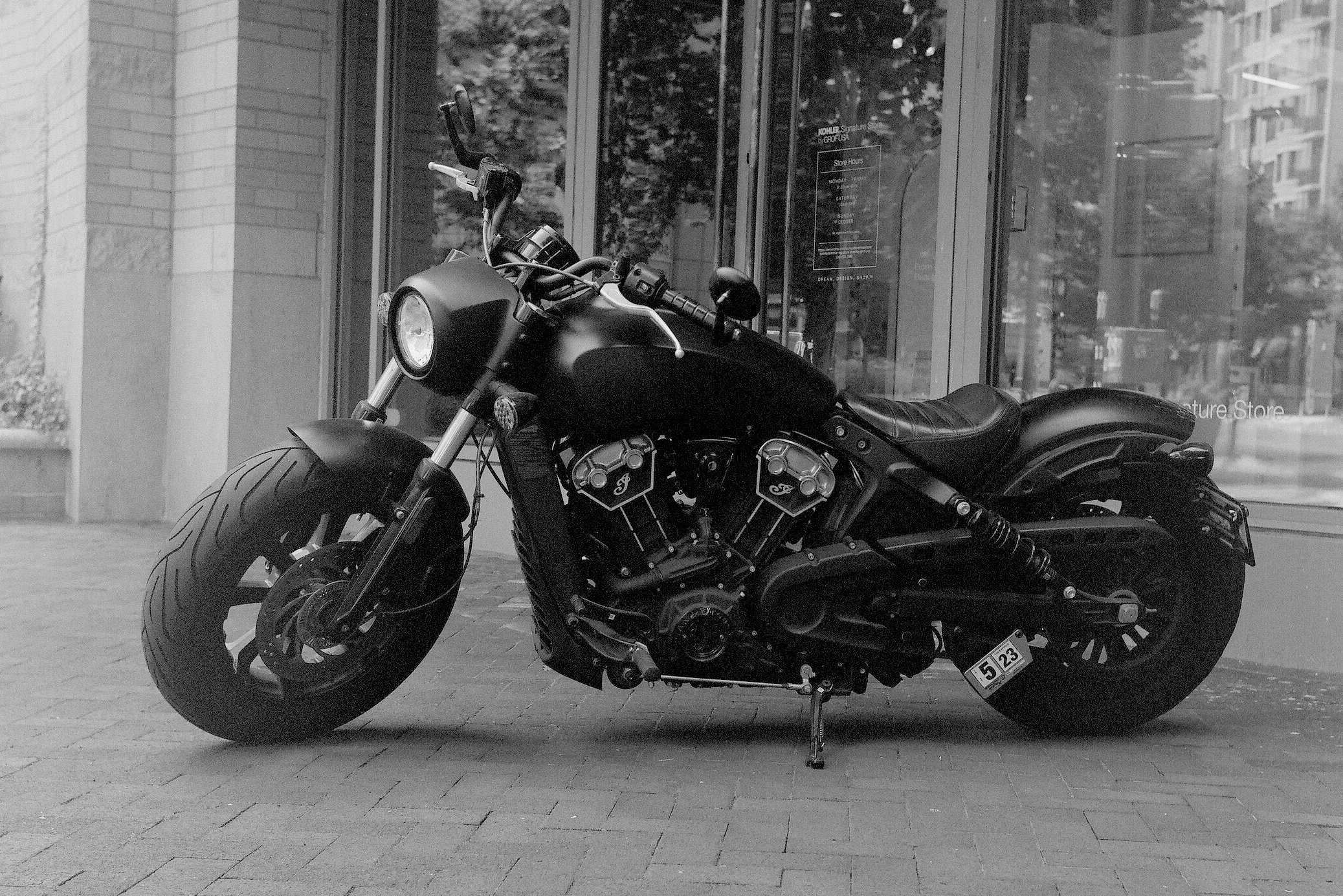Rolleiflex
The dominant design of the twin lens reflex.
Rolleiflex MX with 75mm f/3.5 Zeiss-Opton Tessar. (Color photos of the cameras were made with a Nikon F, 55mm f/3.5 Micro-Nikkor-P.C, and Portra 400.)
1937: the TLR paradigm was set
The Rolleiflex wasn’t the first twin lens reflex (TLR) camera, but it ‘defined the breed’ (Gustavson, 2011). Rolleiflexes were made by Frank & Heidecke of Braunschweig, Germany and the first one appeared in 1929.
In 1937 an improved model, the Rolleiflex Automat, came out. ‘Some additional features were to be added later, but this camera is essentially the same Rolleiflex which would be manufactured for 43 years’ (Evans, 1986).
Thus, Rolleiflex had created the dominant design of the TLR. Dominant designs appear following ‘an initial period of intensive churning of product innovations’ when ‘experimentation with the fundamental systems of the machine’ die down and substantial innovation stops (Utterback, 1994).
Sunny the nice dog Silver Spring, Md. Rolleiflex T, 75mm f/3.5 Carl Zeiss Tessar, Tri-X, 2025.
1950s: heyday of the TLR
TLRs have relatively few moving parts which helps control manufacturing costs, and medium format helps with photo quality. That’s a great combination and the TLR design became popular following World War II.
In the 1950s a lot of Japanese camera companies made TLRs. Some were innovative, but many followed the dominant design, the Rolleiflex. The Yashica Mat, for example, is a Rolleiflex-inspired design.
The Rolleiflex was a standard professional medium format camera before the Hasselblad 500C was launched in 1957.
Roppongi station, Tokyo Rolleiflex MX, 75mm f/3.5 Zeiss-Opton Tessar, Verichrome Pan, 2004.
Rolleiflex MX and Rolleiflex T
The Rolleiflex MX (made 1951 to 1954) is a lightly updated descendant of the 1937 Automat. The lens is a 75mm f/3.5 unit, either a Schneider Xenar or Zeiss-Opton Tessar. Starting in 1954 the Tessars were re-branded as Carl Zeiss (Evans, 1986).
From the mid-1950s the standard Rolleiflex models were fitted with the more complex Schneider Xenotar or Carl Zeiss Planar lenses.
The Rolleiflex T appeared in 1958 as a lower cost model. It had the Carl Zeiss Tessar lens and other minor simplifications, and was in production until the mid-1970s (1975 per McKeown, 1996; 1976 per Evans, 1986).
EPA building Washington, D.C. Rolleiflex MX, 75mm f/3.5 Zeiss-Opton Tessar, Fomapan 100, 2023.
Using the Rolleiflex MX and T
Compared to the MX, the newer T model has:
A much brighter focus screen. This is an important advantage, as focusing and composition are quicker and easier.
Improved ‘pinch’ design for folding the waist level finder.
Non-automated film starting. The film is manually set to its starting point, as with the Yashica Mat. This is ‘neutral’ - neither good nor bad.
A single lever to control both shutter speeds and aperture, instead of the two wheels on the MX and other Rolleiflex models. This is cumbersome and irritating. The regular Rolleiflex two-wheel control is much better.
Rolleiflex T with 75mm f/3.5 Carl Zeiss Tessar.
Summary
The Rolleiflex is a great camera but unfortunately it is historically significant and has collector value. The good news is that there are excellent Rolleiflex-inspired TLRs from Japan and China. See my articles on the Yashica Mat and the Seagull.
Maintenance and repair
I have not done any maintenance on either Rolleiflex.
Bethesda, Md. Indian motorcycle Rolleiflex T, Tri-X, 2024.
References / further reading
Camera manual: orphancameras.com Has the manual for many Rolleiflex models including the Rolleiflex T and the MX, which is filed under Rolleiflex Automatic or Automatic Rolleiflex.
More references:
Emanuel, W.D. 1975. Rolleiflex Guide, 41st ed. London: Focal Press. Special edition by A Photographers Place, New York.
Evans, A. 1986. Collectors Guide to Rolleiflex Cameras. Grantsburg, Wis.: Centennial Photo Service.
Gustavson, T. 2011. 500 Cameras: 170 Years of Photographic Innovation. New York: Fall River Press. The 500 cameras are from the George Eastman House Technology Collection, Rochester, N.Y.
p. 171: Rolleiflex I; p. 172: Rolleicord (made by the same company, it had some features deleted and sold at a lower price); p. 182: Rolleiflex 3.5E.
Matanle, I. 1986. Collecting and Using Classic Cameras. London: Thames and Hudson.
p. 131: ‘…the Rolleiflex Automatic with its superb f/3.5 Tessar and Compur Rapid shutter, became as dominant a medium format camera among commercial photographers as the Hasselblad is today’.
McKeown, J.M. and J.C. 1996. McKeown’s Price Guide to Antique and Classic Cameras, 1997-1998. Grantsburg, Wis.: Centennial Photo.
Pritchard, Michael. 2014. A History of Photography in 50 Cameras. Buffalo, N.Y.: Firefly Books. (The Rolleiflex 3.5F is camera no. 35.)
Utterback, J. M. 1994. Mastering the Dynamics of Innovation. Boston: Harvard Business School Press.
Tatte Bakery and Cafe Bethesda, Md. Rolleiflex T, 75mm f/3.5 Carl Zeiss Tessar, Tri-X, 2024.






